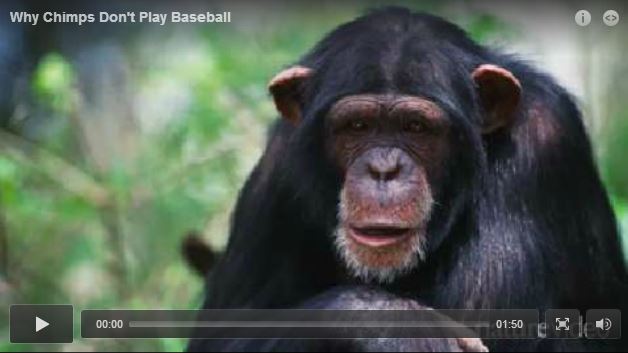How Humans Evolved to Play Hardball

Sporting feats such as baseball's 100-mile-per-hour fastball are made possible by a suite of anatomical features that appeared in our hominin ancestors about 2 million years ago, a video study of college athletes suggests.
And this ability to throw projectiles may have been crucial for human hunting, which in turn may have had a vital role in our evolution.
“Throwing projectiles probably enabled our ancestors to effectively and safely kill big game,” says Neil Roach, a biological anthropologist at George Washington University in Washington DC, who led the work. Eating more calorie-rich meat and fat would have helped early hominins' brains and bodies to grow, enabling our ancestors to expand into new regions of the world, he suggests. The study is published today in Nature1.
Although some primates occasionally throw objects, and with a fair degree of accuracy, only humans can routinely hurl projectiles with both speed and accuracy, says Roach.
Adult male chimpanzees can throw objects at speeds of around 30 kilometres per hour, but even a 12-year-old human can pitch a baseball three times faster than that, he notes. In fact, the quickest motion that the human body produces — rotation of the humerus, the long bone in the upper arm, at a rate that is briefly equivalent to 25 full rotations in a single second — occurs while a person is throwing a projectile.
Roach and his colleagues found that human power and precision in throwing are down to adaptations mostly related to the shoulder.
Arm-cocking phase
The researchers used high-speed motion-capture cameras to record the throwing motions of 20 college athletes, including 16 baseball players. They then handicapped the athletes' throwing abilities to that thought to be more similar to that of our ancestral hominins, using therapeutic braces to constrain the range of motion in their throwing arms. The researchers could do this by simulating the shape and configuration of the joints of hominins known from the fossil record.
Their analyses suggest that shoulder muscles produce no more than half of the power generated during a throwing motion. Much of the remaining power comes from evolutionarily novel features in the shoulder and elsewhere in the body that temporarily store energy and then rapidly release it, the researchers contend.
The human torso and shoulder act like a spring, which gives us our prowess in throwing. For instance, the angle between the head of the humerus that fits into the shoulder socket and its shaft is as much as 20° smaller in humans than it is in chimpanzees. That, says Roach, extends the arm’s range of motion, allowing humans to store more energy in the tendons of their shoulder because they can cock their arm farther back before a throw.
The team found that during the arm-cocking phase, a thrower’s humerus rotated almost 60° beyond the limit that he could reach using his own muscle power, a sign that ligaments and tendons were stretching and storing energy.
Also, humans' long, flexible waist relative to that of chimps enables greater rotation of the torso, which in turn allows more energy to be stored before a projectile is loosed. Finally, the researchers note, the orientation of the shoulder joint in humans increases the ability to produce torque during a throwing motion. Together, says Roach, these features help to transform the human arm into an efficient and powerful catapult.
Endurance running
Although some of these anatomical features show up individually in australopithecines, which lived between about 4 million and 2 million years ago, the entire suite does not seem to have appeared until approximately 2 million years ago in the species Homo erectus. Possibly not coincidentally, that is around the same time that a diverse suite of features linked to endurance running show up in the hominin fossil record2
The team’s findings “make a very good case” that much of modern man’s throwing prowess is focused in the shoulder, says Scott Williams, an anthropologist at New York University in New York city.
“This is interesting work, combining experimental results with observations of anatomy to create testable hypotheses,” says Zeresenay Alemseged, a palaeoanthropologist at the California Academy of Sciences in San Francisco.
Nature doi:10.1038/nature.2013.13281
References
1 Roach, N. T., Venkadesan, M., Rainbow, M. J. & Lieberman, D. E. Nature 498, 483–486 (2013).
2 Bramble, D. M. & Lieberman, D. E. Nature 432, 345–352 (2004).

